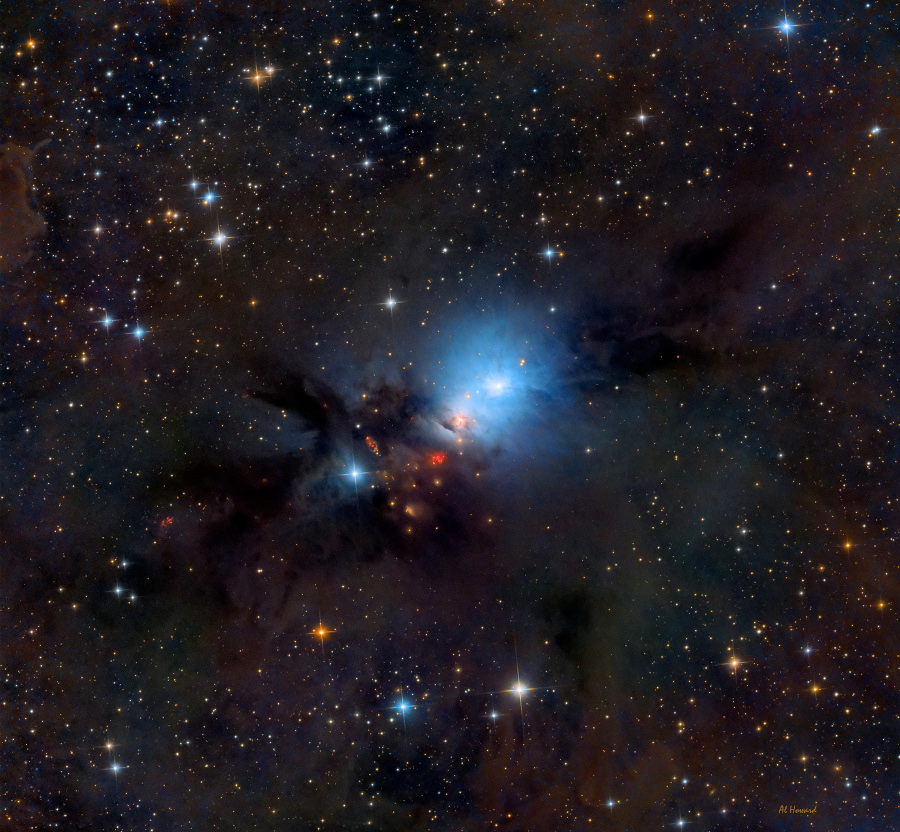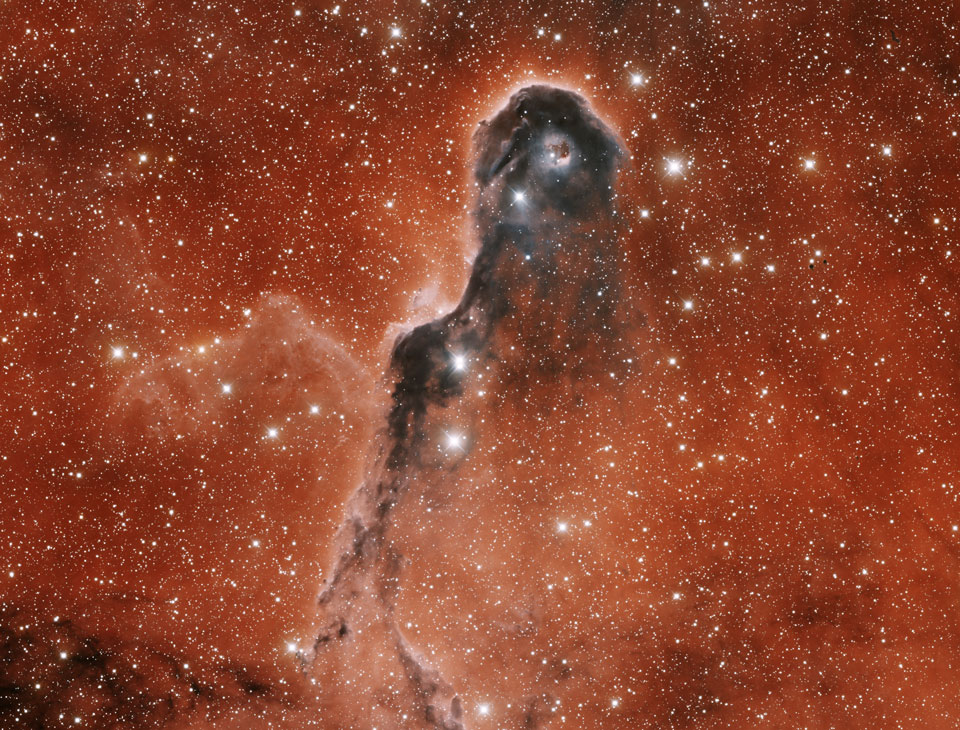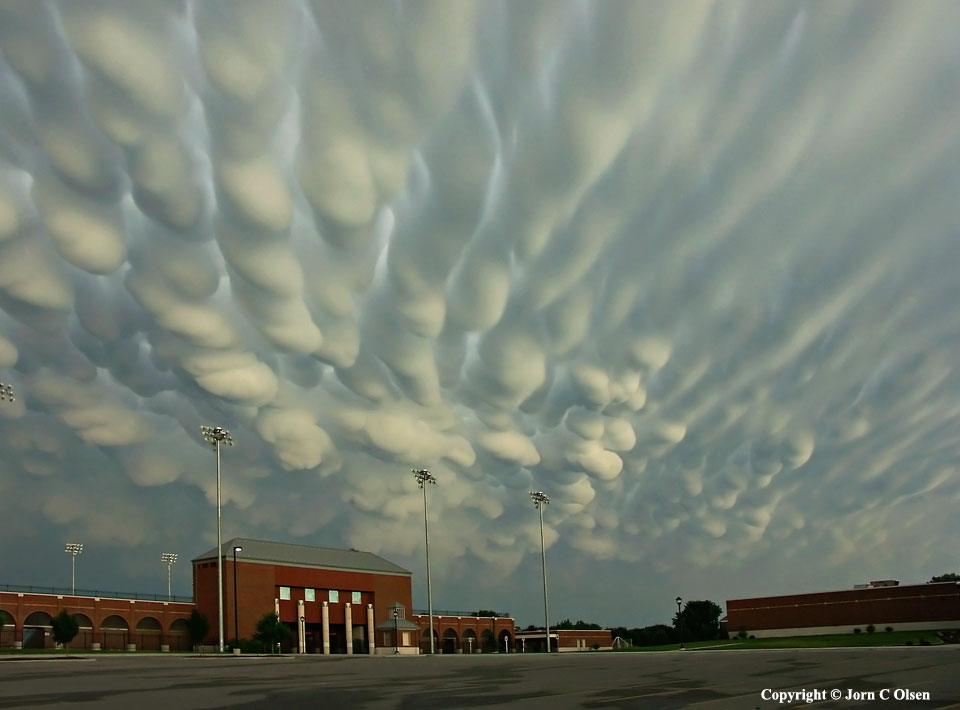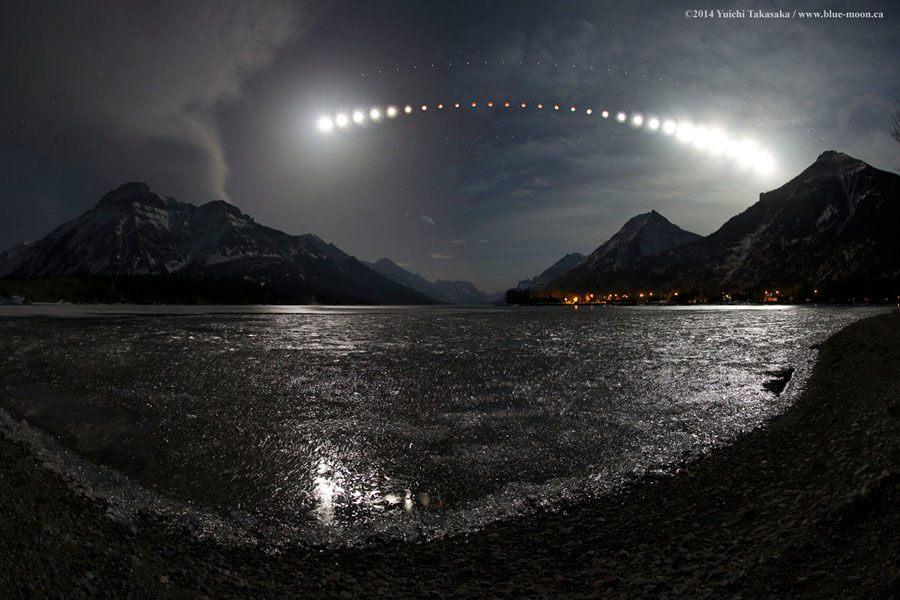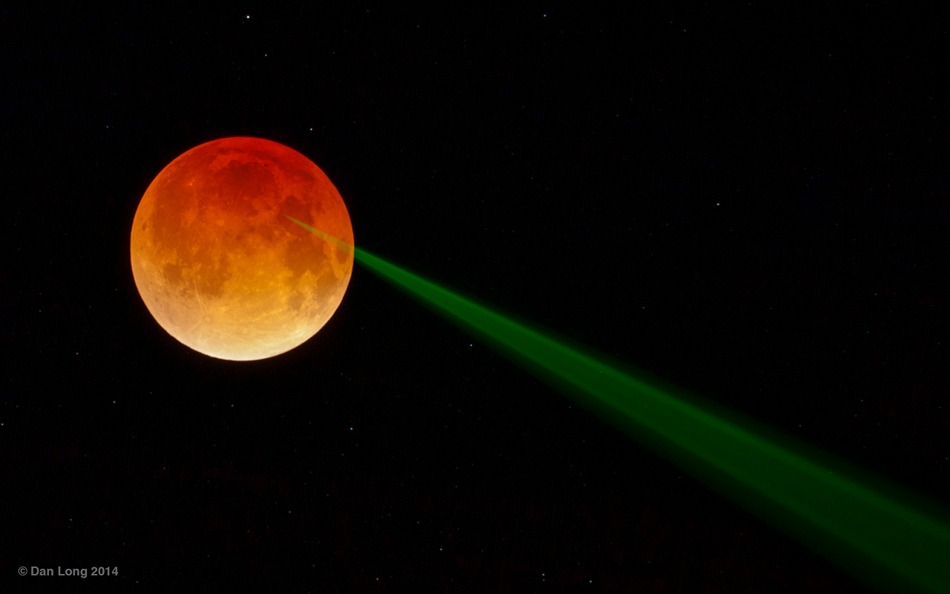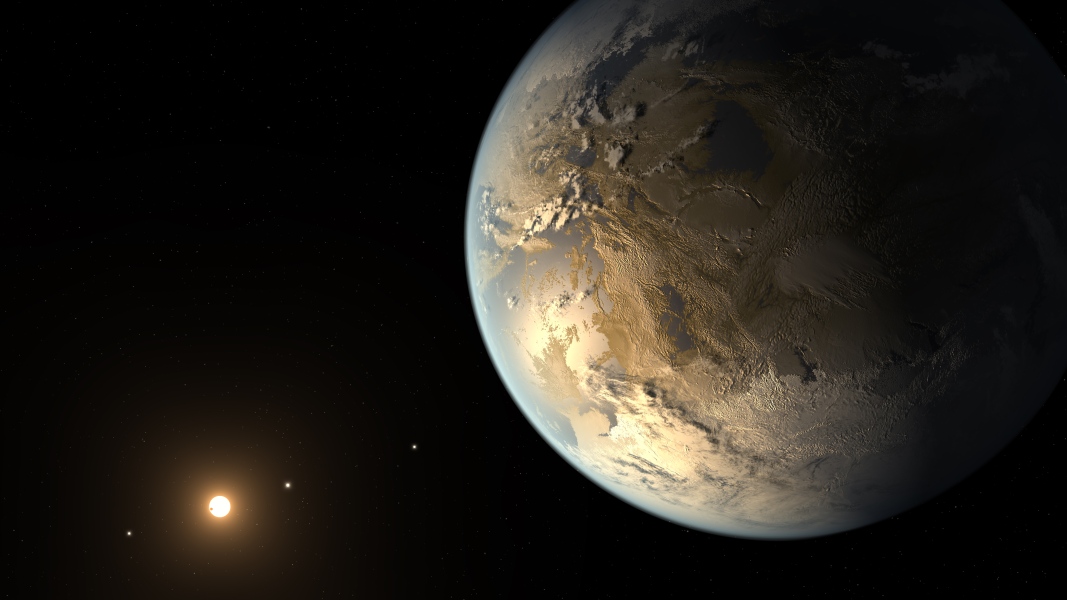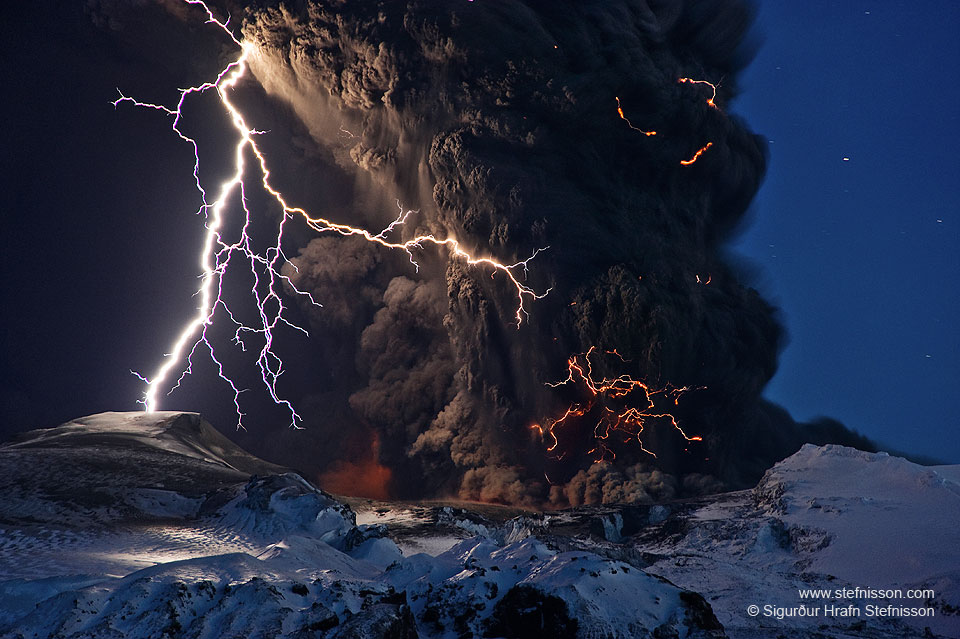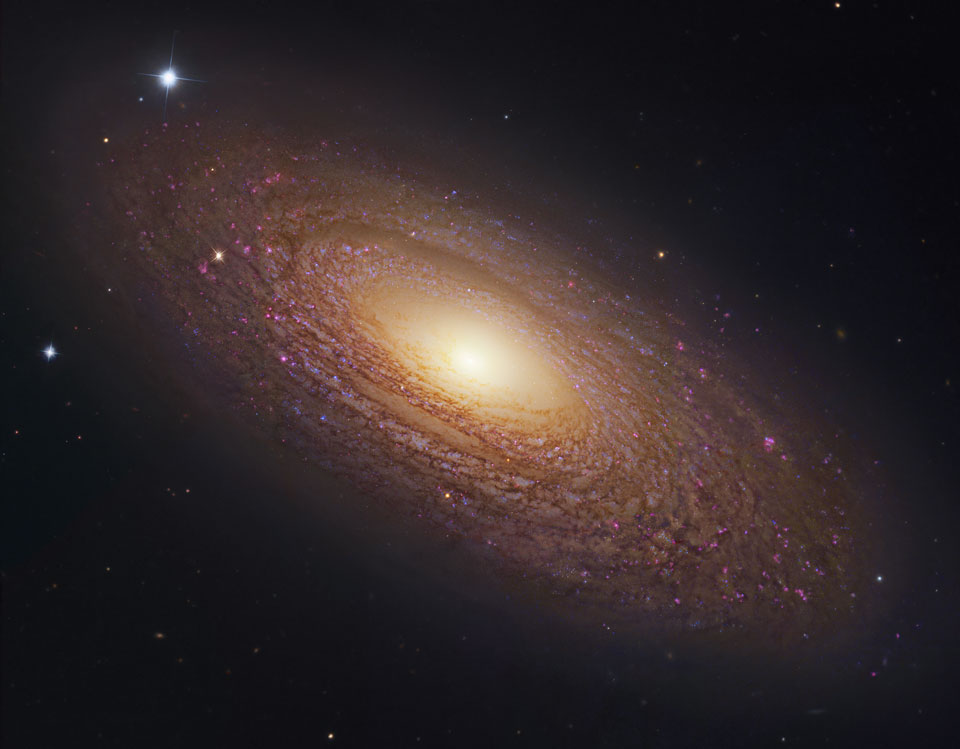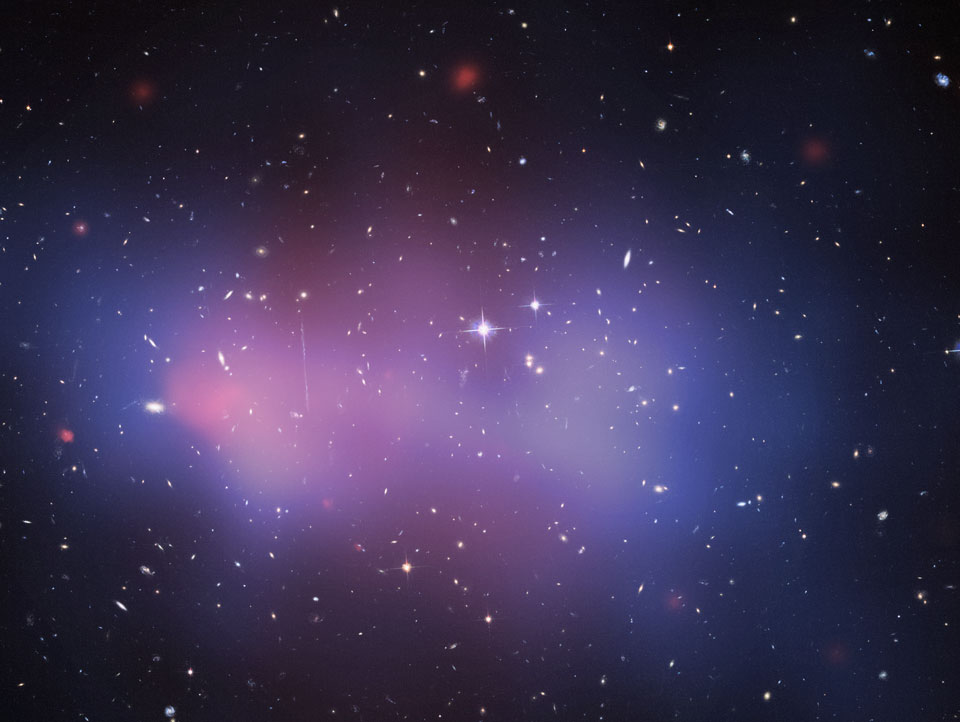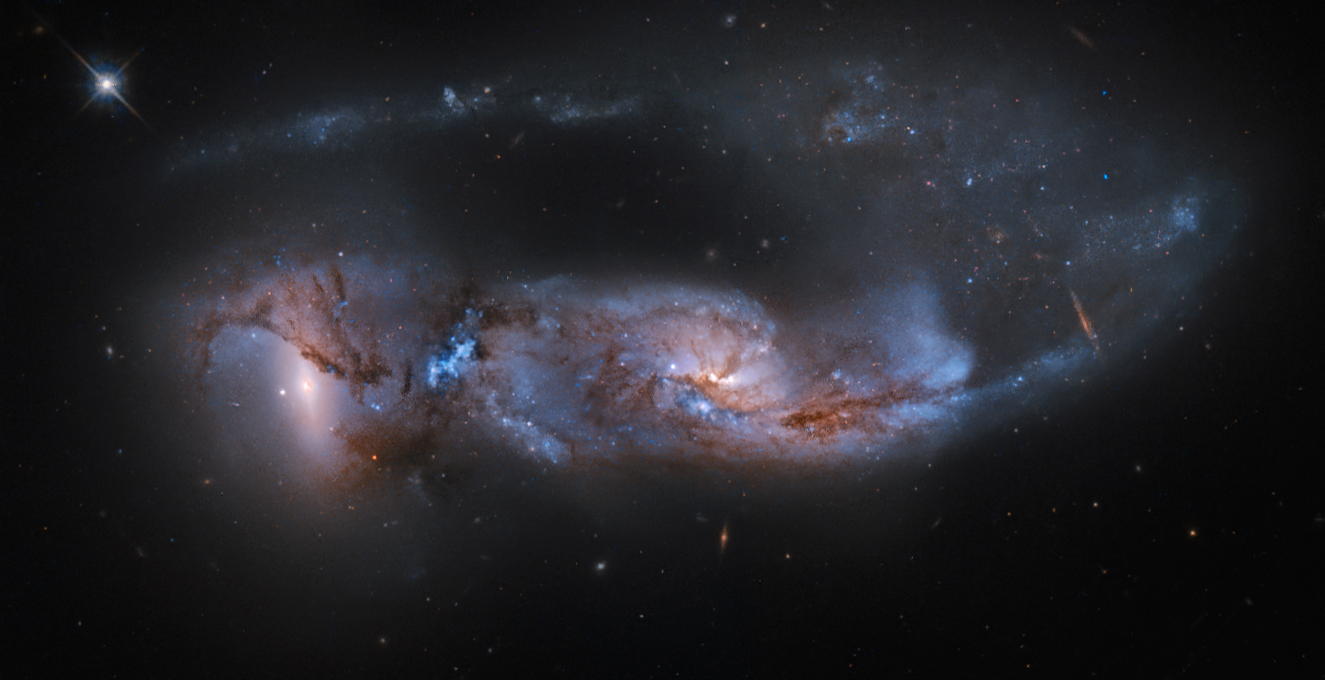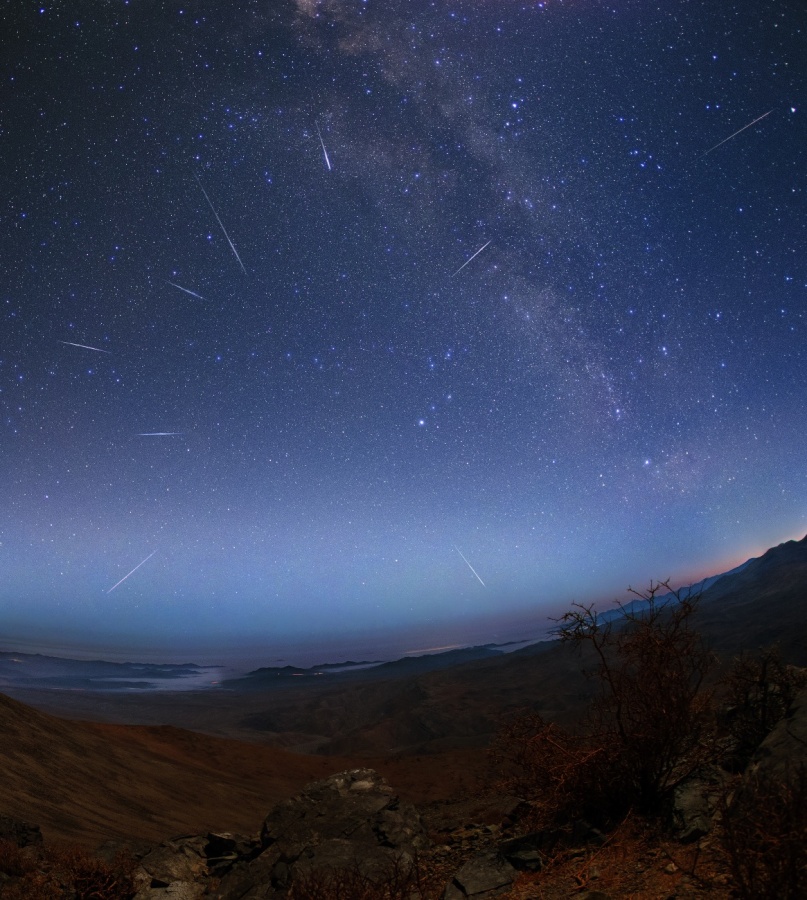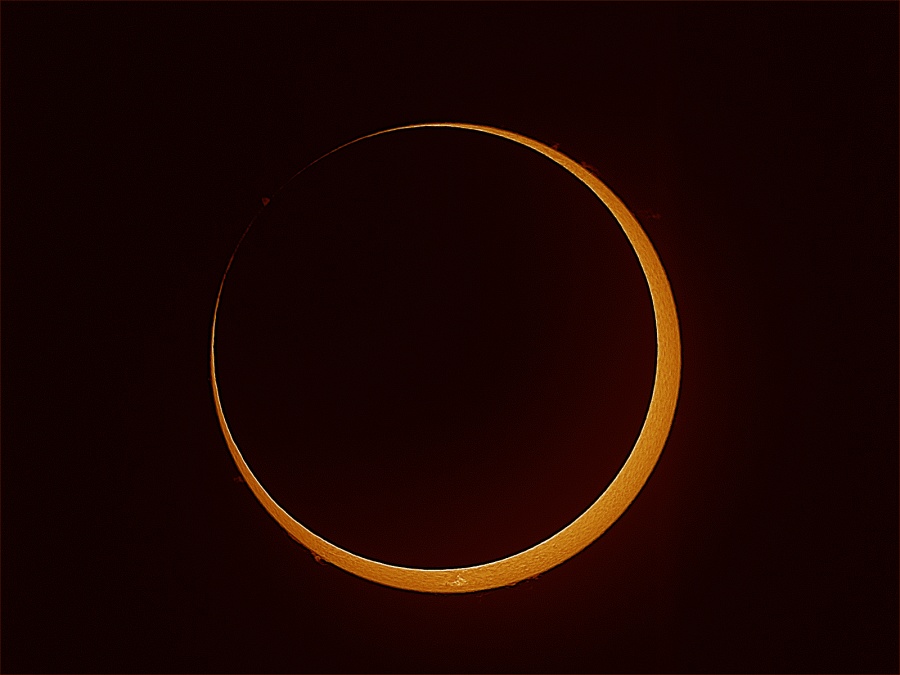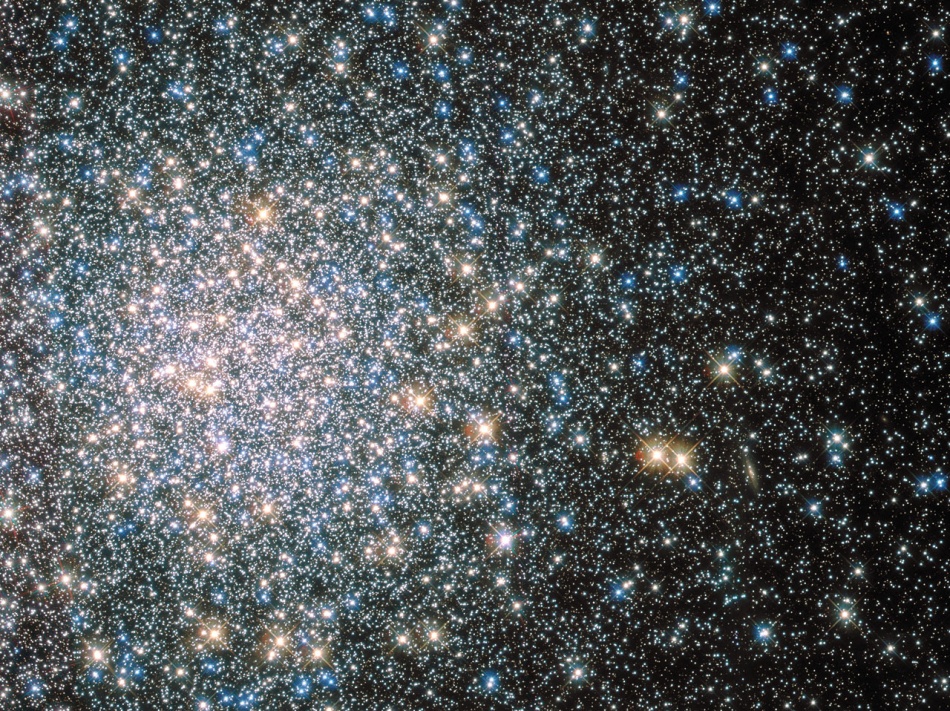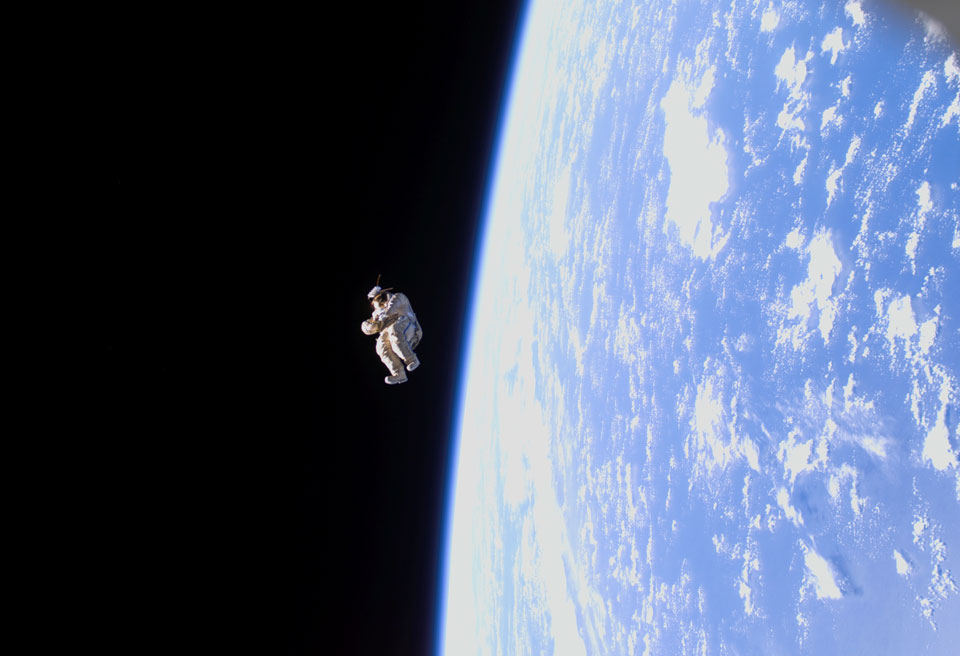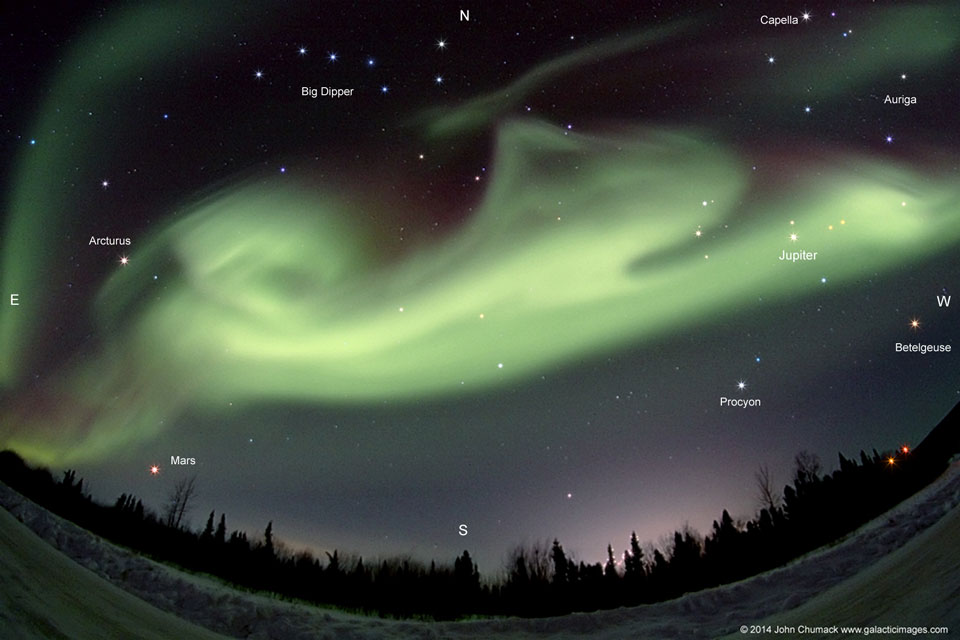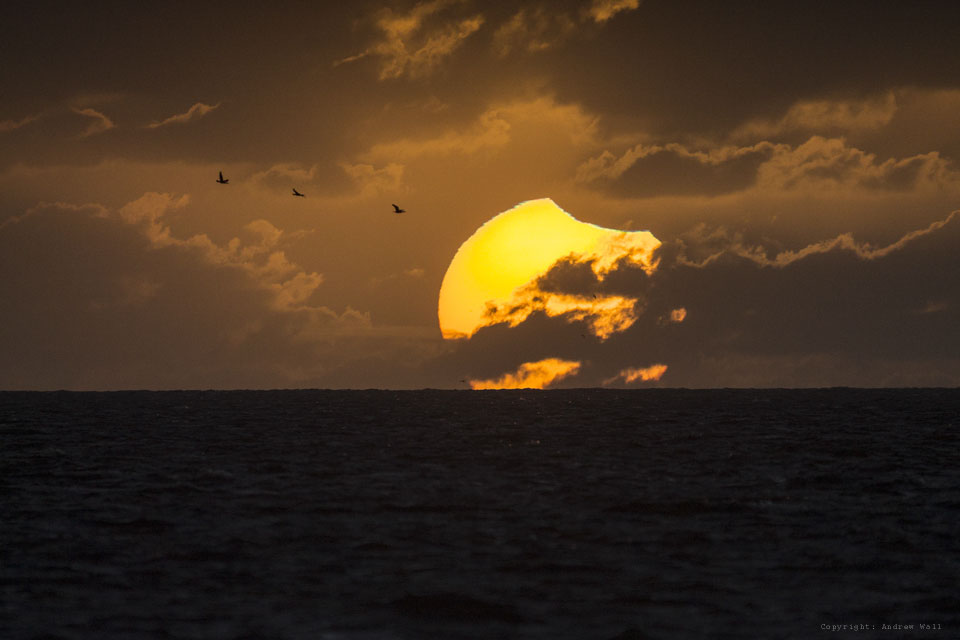
|
| Title: Astronomy Picture of the Day | |
| friendsoffortiesfive > General > General Discussion | Go to subcategory: |
| Author | Content |
|
Niceguy2
|
|
|
Date Posted:03/06/2014 11:29 PMCopy HTML I really love this site and |
|
|
Niceguy2
|
#76 |
|
Re:Astronomy Picture of the Day Date Posted:04/14/2014 6:28 PMCopy HTML Credit & Copyright: T. Rector (U. Alaska Anchorage) & H. Schweiker (WIYN, NOAO, AURA, NSF) Explanation: Is there a monster in IC 1396? Known to some as the Elephant's Trunk Nebula, parts of gas and dust clouds of this star formation region may appear to take on foreboding forms, some nearly human. The only real monster here, however, is a bright young star too far from Earth to hurt us. Energetic light from this star is eating away the dust of the dark cometary globule near the top of the above image. Jets and winds of particles emitted from this star are also pushing away ambient gas and dust. Nearly 3,000 light-years distant, the relatively faint IC 1396 complex covers a much larger region on the sky than shown here, with an apparent width of more than 10 full moons. |
|
|
Niceguy2
|
#77 |
|
Re:Astronomy Picture of the Day Date Posted:04/16/2014 10:43 PMCopy HTML Image Credit & Copyright: Jorn Olsen Photography Explanation: When do cloud bottoms appear like bubbles? Normally, cloud bottoms are flat. This is because moist warm air that rises and cools will condense into water droplets at a specific temperature, which usually corresponds to a very specific height. As water droplets grow, an opaque cloud forms. Under some conditions, however, cloud pockets can develop that contain large droplets of water or icethat fall into clear air as they evaporate. Such pockets may occur in turbulent air near a thunderstorm. Resulting mammatus clouds can appear especially dramatic if sunlit from the side. The mammatus cloudspictured above were photographed over Hastings, Nebraska during 2004 June. |
|
|
Niceguy2
|
#78 |
|
Re:Astronomy Picture of the Day Date Posted:04/16/2014 10:44 PMCopy HTML Image Credit & Copyright: Damian Peach Explanation: A beautiful, reddened Moon slid through dark skies on April 15, completely immersed in Earth's shadow for well over an hour. It was the year's first total lunar eclipse and was widely enjoyedover the planet's Western Hemisphere. Seen from the Caribbean island of Barbados, the dimmed lunar disk is captured during totality in this colorful skyview. The dark Moon's red color contrasts nicely with bright bluish star Spica, alpha star of the constellation Virgo, posing only about two degrees away. Brighter than Spica and about 10 degrees from the Moon on the right, Mars is near opposition and closest approach to Earth. The Red Planet's own ruddy hue seems to echo the color of the eclipsed Moon. |
|
|
Niceguy2
|
#79 |
|
Re:Astronomy Picture of the Day Date Posted:04/17/2014 9:34 PMCopy HTML Image Credit & Copyright: Yuichi Takasaka / TWAN / www.blue-moon.ca Explanation: Recorded on April 15th, this total lunar eclipse sequence looks south down icy Waterton Lake from the Waterton Lakes National Park in Alberta, Canada, planet Earth. The most distant horizon includes peaks in Glacier National Park, USA. An exposure every 10 minutes captured the Moon's position and eclipse phase, as it arced, left to right, above the rugged skyline and Waterton town lights. In fact, the sequence effectively measures the roughly 80 minute duration of the total phase of the eclipse. Around 270 BC, the Greek astronomer Aristarchus also measured the duration of lunar eclipses - though probably without the benefit of digital clocks and cameras. Still, using geometry, he devised a simple and impressively accurate way to calculate the Moon's distance, in terms of the radius of planet Earth, from the eclipse duration. This modern eclipse sequence also tracks the successive positions of Mars, above and right of the Moon, bright star Spica next to the reddened lunar disk, and Saturn to the left and below. |
|
|
Niceguy2
|
#80 |
|
Re:Astronomy Picture of the Day Date Posted:04/20/2014 4:15 AMCopy HTML Image Credit & Copyright: Dan Long (Apache Point Observatory) - Courtesy: Tom Murphy (UC San Diego) Explanation: This is not a scene from a sci-fi special effects movie. The green beam of light and red lunar disk are real enough, captured in the early morning hours of April 15. Of course, the reddened lunar disk is easy to explain as the image was taken during this week's total lunar eclipse. Immersed in shadow, the eclipsed Moon reflects the dimmed reddened light of all the sunsets and sunrises filtering around the edges of planet Earth, seen in silhouette from a lunar perspective. But the green beam of light really is a laser. Shot from the 3.5-meter telescope at Apache Point Observatory in southern New Mexico, the beam's path is revealed as Earth's atmosphere scatters some of the intense laser light. The laser's target is the Apollo 15 retroreflector, left on the Moon by the astronauts in 1971. By determining the light travel time delay of the returning laser pulse, the experimental team from UC San Diego is able to measure the Earth-Moon distance to millimeter precision and provide a test of General Relativity, Einstein's theory of gravity. Conducting the lunar laser ranging experiment during a total eclipse uses the Earth like a cosmic light switch. With direct sunlight blocked, the reflector's performance is improved over performance when illuminated by sunlight during a normal Full Moon, an effect known as the real Full Moon Curse. |
|
|
Niceguy2
|
#81 |
|
Re:Astronomy Picture of the Day Date Posted:04/20/2014 4:20 AMCopy HTML Illustration Credit: NASA Ames / SETI Institute / JPL-Caltech, Discovery: Elisa V. Quintana, et al. Explanation: Planet Kepler-186f is the first known Earth-size planet to lie within the habitable zone of a star beyond the Sun. Discovered using data from the prolific planet-hunting Kepler spacecraft, the distant world orbits its parent star, a cool, dim, M dwarf star about half the size and mass of the Sun, some 500 light-years away in the constellation Cygnus. M dwarfs are common, making up about 70 percent of the stars in our Milky Way galaxy. To be within the habitable zone, where surface temperatures allowing liquid water are possible, Kepler-186f orbits close, within 53 million kilometers (about the Mercury-Sun distance) of the M dwarf star, once every 130 days. Four other planets are known in the distant system. All four are only a little larger than Earth and in much closer orbits, also illustrated in the tantalizing artist's vision. While the size and orbit of Kepler-186f are known, its mass and composition are not, and can't be determined by Kepler's transit technique. Still, models suggest that it could be rocky and have an atmosphere, making it potentially the most Earth-like exoplanet discovered so far ... |
|
|
Niceguy2
|
#82 |
|
Re:Astronomy Picture of the Day Date Posted:04/20/2014 4:23 AMCopy HTML That last one is really exciting! Big news! I heard about that on the news yesterday. Wow!
|
|
|
Niceguy2
|
#83 |
|
Re:Astronomy Picture of the Day Date Posted:04/20/2014 4:27 AMCopy HTML Image Credit & Copyright: Sigurður Stefnisson Explanation: Why did a picturesque 2010 volcanic eruption in Iceland create so much ash? Although the large ash plume was not unparalleled in its abundance, its location was particularly noticeable because it drifted across such well-populated areas. The Eyjafjallajökull volcano in southern Iceland began erupting on 2010 March 20, with a second eruption starting under the center of a small glacier on 2010 April 14. Neither eruption was unusually powerful. The second eruption, however, melted a large amount of glacial ice which then cooled and fragmented lava into gritty glass particles that were carried up with therising volcanic plume. Pictured above during the second eruption, lightning bolts illuminate ash pouring out of the Eyjafjallajökull volcano. |
|
|
tamarafromTX
|
#84 |
|
Re:Astronomy Picture of the Day Date Posted:04/20/2014 5:08 AMCopy HTML
I have enjoyed all of these postings, Joe. Thanks for sharing. |
|
|
tamarafromTX
|
#85 |
|
Re:Astronomy Picture of the Day Date Posted:04/20/2014 5:11 AMCopy HTML |
|
|
Niceguy2
|
#86 |
|
Re:Astronomy Picture of the Day Date Posted:04/20/2014 5:22 AMCopy HTML Thank you and you're welcome.
 |
|
|
Niceguy2
|
#87 |
|
Re:Astronomy Picture of the Day Date Posted:04/23/2014 5:32 AMCopy HTML Image Credit: Hubble, Subaru; Composition & Copyright: Robert Gendler Explanation: It is one of the more massive galaxies known. A mere 46 million light-years distant, spiral galaxy NGC 2841 can be found in the northern constellation of Ursa Major. This sharp view of the gorgeous island universe shows off a striking yellow nucleus and galactic disk. Dust lanes, small, pink star-forming regions, and young blue star clusters are embedded in the patchy, tightly wound spiral arms.In contrast, many other spirals exhibit grand, sweeping arms with large star-forming regions. NGC 2841 has a diameter of over 150,000 light-years, even larger than our own Milky Way and captured by this composite image merging exposures from the orbiting 2.4-meter Hubble Space Telescope and the ground-based 8.2-meter Subaru Telescope. X-ray images suggest that resulting winds and stellar explosions create plumes of hot gas extending into a halo around NGC 2841. |
|
|
Niceguy2
|
#88 |
|
Re:Astronomy Picture of the Day Date Posted:04/23/2014 5:40 AMCopy HTML Image Credit: NASA, ESA, J. Jee (UC Davis) et al. Explanation: It is bigger than a bread box. In fact, it is much bigger than all bread boxes put together. Galaxy cluster ACT-CL J0102-4915 is one of the largest and most massive objects known. Dubbed "El Gordo", the seven billion light years (z = 0.87) distant galaxy cluster spans about seven million light years and holds the mass of a million billion Suns. The above image of El Gordo is a composite of a visible light image from the Hubble Space Telescope, an X-ray image from the Chandra Observatory showing the hot gas in pink, and a computer generated map showing the most probable distribution of dark matter in blue, computed from gravitational lens distortions of background galaxies. Almost all of the bright spots are galaxies. The blue dark matter distribution indicates that the cluster is in the middle stages of a collision between two large galaxy clusters. A careful inspection of the image will reveal a nearly vertical galaxy that appears unusually long. That galaxy is actually far in the background and has its image stretched by the gravitational lens action of the massive cluster. |
|
|
Niceguy2
|
#89 |
|
Re:Astronomy Picture of the Day Date Posted:04/23/2014 5:41 AMCopy HTML Absolutely mind-boggling!!
|
|
|
Niceguy2
|
#90 |
|
Re:Astronomy Picture of the Day Date Posted:04/23/2014 5:46 AMCopy HTML Image Credit: Hubble Legacy Archive, ESA, NASA; Processing - Martin Pugh Explanation: From planet Earth, we see this strongly distorted pair of galaxies, cataloged as Arp 81, as they were only about 100 million years after their close encounter. The havoc wreaked by their mutual gravitational interaction during the encounter is detailed in this color composite image showing twisted streams of gas and dust, a chaos of massive star formation, and a tidal tail stretching for 200 thousand light-years or so as it sweeps behind the cosmic wreckage. Also known as NGC 6622 (left) and NGC 6621, the galaxies are roughly equal in size but are destined to merge into one large galaxy in the distant future, making repeated approaches until they finally coalesce. Located in the constellation Draco, the galaxies are 280 million light-years away. Even more distant background galaxies can be spotted in this sharp, reprocessed, image from Hubble Legacy Archive data. |
|
|
tamarafromTX
|
#91 |
|
Re:Astronomy Picture of the Day Date Posted:04/24/2014 7:25 PMCopy HTML
|
|
|
Niceguy2
|
#92 |
|
Re:Astronomy Picture of the Day Date Posted:04/24/2014 10:00 PMCopy HTML Image Credit & Copyright: Yuri Beletsky (Las Campanas Observatory, Carnegie Institution) Explanation: Earth's annual Lyrid meteor shower peaked before dawn on April 22nd, as our fair planet plowed through dust from the tail of long-period comet Thatcher. Even in the dry and dark Atacama desert along Chile's Pacific coast, light from a last quarter Moon made the night sky bright, washing out fainter meteor streaks. But brighter Lyrid meteors still put on a show. Captured in this composited earth-and-sky view recorded during early morning hours, the meteors stream away from the shower's radiant near Vega, alpha star of the constellation Lyra. The radiant effect is due to perspective as the parallel meteor tracks appear to converge in the distance. Rich starfields and dust clouds of our own Milky Way galaxy stretch across the background. |
|
|
Niceguy2
|
#93 |
|
Re:Astronomy Picture of the Day Date Posted:04/26/2014 4:15 AMCopy HTML Image Credit & Copyright: Cameron McCarty, Matthew Bartow, Michael Johnson - MWV Observatory, Coca-Cola Space Science Center, Columbus State University Eclipse Team Explanation: It's eclipse season, and on April 29 around 06:00 UT the shadow of the new Moon will reach out and touch planet Earth, though only just. Still, if you're standing on the continent of Antarctica within a few hundred kilometers of 79 degrees 38.7 minutes South latitude and 131 degrees 15.6 minutes East longitude you could see an annular solar eclipse with the Sun just above the horizon. Because the Moon will be approaching apogee, the most distant point in the elliptical lunar orbit, its apparent size will be too small to completely cover the solar disk. A rare, off-center eclipse, the annular phase will last at most 49 seconds. At its maximum it could look something like this "ring of fire" image from last May's annular solar eclipse, captured by a webcast team operating near Coen, Australia. Otherwise, a partial eclipse with the Moon covering at least some part of the Sun will be seen across a much broader region in the southern hemipshere, including Australia in the afternoon. |
|
|
Niceguy2
|
#94 |
|
Re:Astronomy Picture of the Day Date Posted:04/27/2014 3:33 AMCopy HTML Image Credit: HST, ESA, NASA Explanation: "Beautiful Nebula discovered between the Balance [Libra] & the Serpent [Serpens] ..." begins the description of the 5th entry in 18th century astronomer Charles Messier's famous catalog of nebulae and star clusters. Though it appeared to Messier to be fuzzy and round and without stars, Messier 5 (M5) is now known to be a globular star cluster, 100,000 stars or more, bound by gravity and packed into a region around 165 light-years in diameter. It lies some 25,000 light-years away. Roaming the halo of our galaxy, globular star clusters are ancient members of the Milky Way. M5 is one of the oldest globulars, its stars estimated to be nearly 13 billion years old. The beautiful star cluster is a popular target for Earthbound telescopes. Of course, deployed in low Earth orbit on April 25, 1990, the Hubble Space Telescope has also captured its own stunning close-up view that spans about 20 light-years near the central region of M5. Even close to its dense core at the left, the cluster's aging red and bluegiant stars and rejuvenated blue stragglers stand out in yellow and blue hues in the sharp color image. |
|
|
Niceguy2
|
#95 |
|
Re:Astronomy Picture of the Day Date Posted:04/28/2014 2:02 AMCopy HTML Image Credit: ISS Expedition 12 Crew, NASA Explanation: A spacesuit floated away from the International Space Station eight years ago, but no investigation was conducted. Everyone knew that it was pushed by the space station crew. DubbedSuitsat-1, the unneeded Russian Orlan spacesuit filled mostly with old clothes was fitted with a faint radio transmitter and released to orbit the Earth. The suit circled the Earth twice before its radio signal became unexpectedly weak. Suitsat-1 continued to orbit every 90 minutes until it burned up in the Earth's atmosphere after a few weeks. Pictured above, the lifeless spacesuit was photographed in 2006 just as it drifted away from space station. |
|
|
tamarafromTX
|
#96 |
|
Re:Astronomy Picture of the Day Date Posted:04/28/2014 4:56 AMCopy HTML
|
|
|
Niceguy2
|
#97 |
|
Re:Astronomy Picture of the Day Date Posted:04/28/2014 6:31 PMCopy HTML 2014 April 28<iframe width="960" height="540" src="//www.youtube.com/embed/KBBFzHLvrvA" frameborder="0" allowfullscreen=""></iframe> Video Credit: Adam Block, Mt. Lemmon SkyCenter, U. Arizona Explanation: Why would a bright full Moon suddenly become dark? Because it entered the shadow of the Earth. Almost two weeks ago this exact event happened as the Moon underwent a total lunareclipse. That eclipse, visible from the half of the Earth then facing the Moon, was captured in numerous spectacular photographs and is depicted in the above time lapse video covering about an hour. Theabove video, recorded from Mt. Lemmon Sky Center in Arizona, USA, keeps the Earth shadow centered and shows the Moon moving through it from west to east. The temporarily good alignment between Earth, Moon, and Sun will show itself again tomorrow -- precisely half a moon-th (month) later -- when part of the Earth will pass through part of the new Moon's shadow. |
|
|
Niceguy2
|
#98 |
|
Re:Astronomy Picture of the Day Date Posted:04/28/2014 6:33 PMCopy HTML A reminder:
Don't overlook the scroll bar underneath the text on all these posts. You may scroll from left to right on these large photos and videos.  |
|
|
Niceguy2
|
#99 |
|
Re:Astronomy Picture of the Day Date Posted:04/29/2014 5:52 AMCopy HTML Image Credit & Copyright: John Chumack Explanation: Sometimes it is hard to believe what you see in the sky. While leading his annual aurora tour last month near Fairbanks in central Alaska, astrophotographer John Chumack and his company saw a most unusual aurora. This bright aurora appeared to change into the shape of a jumping dog, complete with a curly tail. He was able to capture the fleeting natural apparition in the above image with a 15-second exposure through a wide-angle lens. By coincidence, he also captured a background sky filled with familiar highlights. Planets visible include bright Jupiter through the dog's front legs and reddish Marsbelow the dog's hind legs. Stars visible include the Big Dipper stars above the dog's midsection and reddish Betelgeuse shining on the far right. This dog would not be following him home, however, and within a few minutes morphed into other shapes before the geomagnetic storm particles that created it shifted to strike the Earth elsewhere. |
|
|
Niceguy2
|
#100 |
|
Re:Astronomy Picture of the Day Date Posted:05/05/2014 12:40 AMCopy HTML Image Credit & Copyright: Andrew Wall Explanation: If you look closely, you will see something quite unusual about this setting Sun. There are birds flying to the Sun's left, but that's not so unusual. A dark sea covers the Sun's bottom, and dark clouds cover parts of the middle, but they are also not very unusual. More unusual is the occulted piece at the top right. And that's no occulting cloud -- that's the Moon. Yesterday the Moon moved in front of part of the Sun as visible from Australia, and although many locations reported annoying clouds, a partially eclipsed Sun would occasionally peek through as it set. The above image was captured yesterday on the western horizon of Adelaide, South Australia. The maximum eclipse was visible only from a small part of Antarctica where the entire Moon could be seen covering the entire center of the Sun in what is known as an annular eclipse, leaving only a ring of fire from the Sun peeking out around the edges. The next solar eclipse will be another partial eclipse, will occur on 2014 October 23, and will be visible from most of North America near sunset. |







